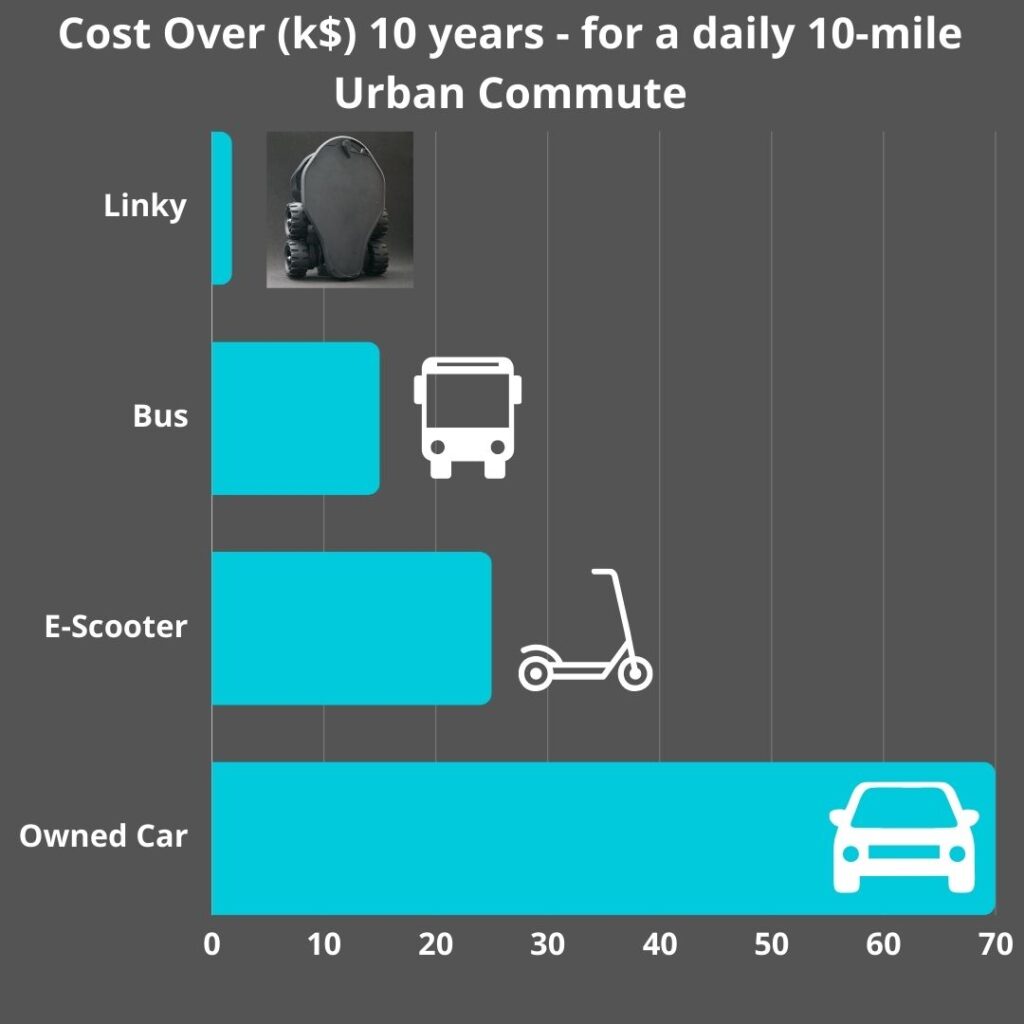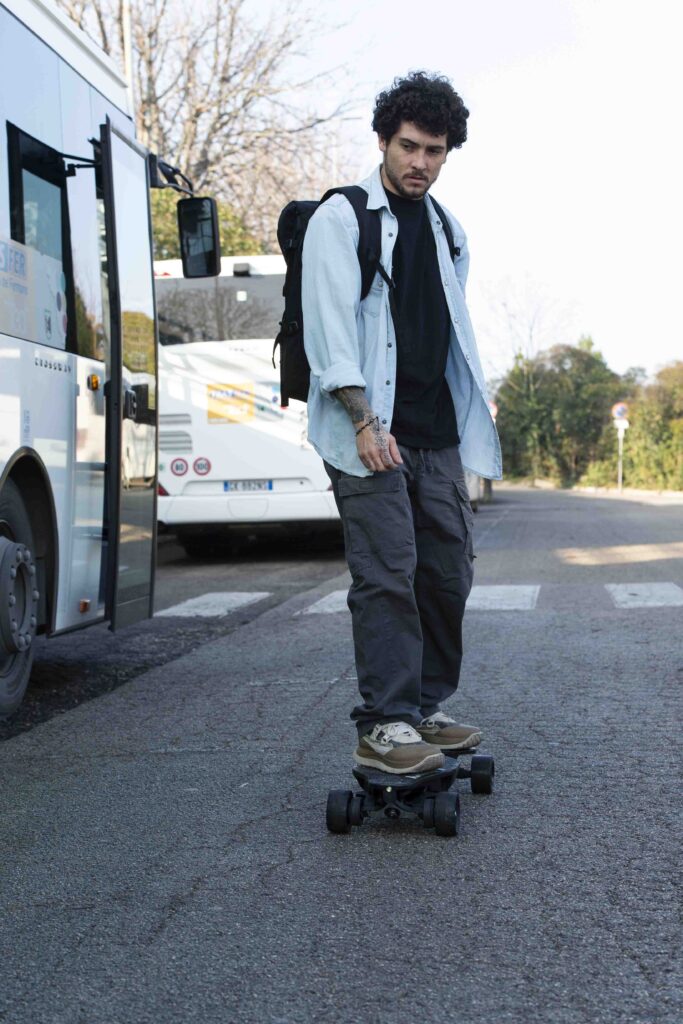The rising cost of transportation, coupled with increasing concerns about environmental sustainability, has led many urban commuters to explore alternative transportation methods. One such option gaining popularity is the foldable electric skateboard, particularly for last-mile transportation. The economic benefits of this mode of transport can be significant, especially when replacing a personal car, public transportation, or e-bike/e-scooter sharing.
Let’s assume Linky’s full price of $1,300 with a 10-year lifespan.
Scenario 1: E-Skate Replacing a Personal Car
Capital Costs: The capital cost of owning a personal car (including depreciation and interest) is substantial. For a $50,000 car, it can be estimated to range between $40,000 and $45,000 over ten years.
Fuel Costs: Assuming an annual urban commuting distance of 2,000 miles (8 miles × 250 days) and an average car fuel cost of 15 cents per mile, the total fuel cost over 10 years would be $3,000. This cost can be reduced to almost zero by using a foldable e-skate like Linky. A full recharge of the standard 160 Wh Linky battery costs less than 3 cents and provides a range of 11 miles.
Maintenance and Repairs: Maintenance costs, including oil changes, tire replacements, and unforeseen repairs, typically amount to around $1,200 per year. Over ten years, this adds up to $12,000.
Insurance: Car insurance can vary widely based on factors like age, location, and driving history, but on average, it costs around $1,200 annually. Over ten years, this totals $12,000.
Parking Fees: Parking in urban areas can be prohibitively expensive. For instance, monthly parking in a city like New York can exceed $500, translating to $6,000 annually or $60,000 over ten years.
When considering all these costs, replacing a car with a foldable e-skate could save a significant amount of money. The total cost of car ownership over ten years can easily exceed $70,000.
Scenario 2: E-Skate Replacing Public Transportation and Bike/Scooter Sharing
Public transportation is less expensive than car ownership, but it still represents a significant recurring expense. The average cost of public transportation in major cities varies, but typically ranges from $100 to $150 per month. For this analysis, let’s assume an average monthly cost of $125. This translates to an annual cost of $1,500, or $15,000 over ten years.
Replacing public transportation with a foldable e-skate can result in significant savings. Even when only replacing bus or subway costs, the savings would amount to $13,200 over ten years ($15,000 for public transportation minus $1,800 for the e-skate, considering $50 per year for power and maintenance).
Savings are even higher when considering shared e-bikes or e-scooters, whose average costs for an annual subscription range between $2,000 and $3,000.
In conclusion, using a foldable e-skate as a last-mile transportation device offers substantial economic benefits compared to both personal car ownership and public or shared transportation. Beyond these financial savings, the e-skate also offers the advantages of convenience, environmental friendliness, and the ability to avoid traffic congestion. As cities continue to grow and traffic becomes increasingly congested, the foldable e-skate emerges as not only an economical but also a practical solution for urban mobility.



